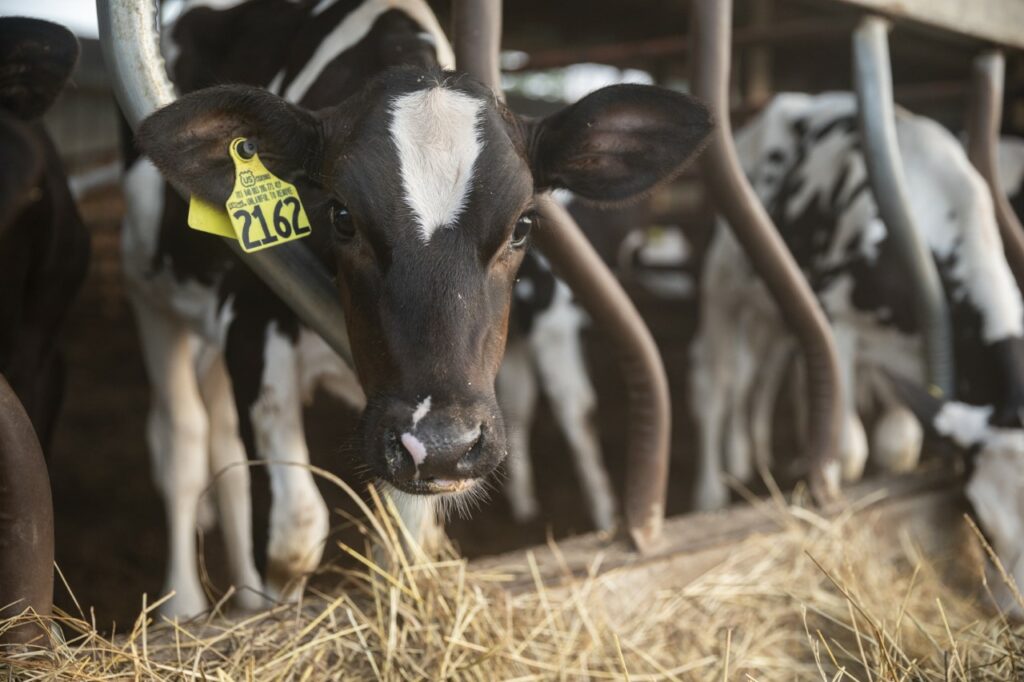A large part of our time consulting is spent relaying observations on what works. This includes things like ingredients, management ideas, cow comfort, etc. I asked our team to come up with a few ideas and topics that they know work and have yet to be fully adopted. We do understand the restrictions and challenges of dairy management. Think of this newsletter as the push to get a few more things done off the to-do list. As we are hopefully nearing the end of this down cycle, doing a few things a little bit better will help get the momentum rolling. We came up with a nice list of ideas that fell into two general categories. First will be some points on feeds and nutrition. The next newsletter will focus on specific cow items.
Feeds and Nutrition

1) Pushup feed. Put the manger pushup on a schedule. We all know that chores happen with regularity when they are put onto a schedule. We had two client meetings a few years ago where Rick Grant and Barry Bradford both talked about the gains from regular pushups. Dr. Grant has data that recommends the first pushup should be done 30 minutes after feeding. This encourages the cow to remain at the bunk for that last increment of intake.
2) In addition to regular pushing up TMR throughout the day, clean mangers daily. Our herds with the highest intakes routinely clean mangers daily. When done daily this feed can go to low cows and/or dry cows on operations that have outsourced raising heifers. If you have heifers on-site using daily manger pushout is easy.

3) Cleaning under the stanchions. The mess in this picture has been there long enough for seeds to have sprouted. This rotting manure and feed is perfect fly breeding material. In addition, these stanchions are “rusting” faster than normal. We still see this too often.
4) Seal the edges around your silage pile. This last step completes the process of excluding oxygen. Proper plant moisture, kernel processing on corn crop, inoculating, packing, covering, tire-to-tire on the pile, and then seal the edges. Most shrink from moldy, damaged feed comes from oxygen infiltration. When edges aren’t sealed oxygen is continually entering under the plastic.
5) Clean water troughs.
6) More water troughs. Target 4” of usable trough space per cow.

7) “Regular” monitoring of silage/wet feed dry matters. This one is so simple we have a hard time getting across its importance. Jason did a very good job describing it when he gave a presentation to our clients. The usual reason we get for not doing it is “It never changes” from clients that have done it and stop. The hazard of this is – It doesn’t change until it does. And it will. At least once a year we all deal with a dairy challenge that is directly related to not having accurate dry matter on silage. The burner system (Koster is just one available) is fast, accurate, and repeatable. We posted an instructional video on YouTube demonstrating the drying procedure. Search for Pine Creek Koster on the YouTube website.

8) Check the kernel processing during harvest. During feed out we have a lab test that can show us the processing score. This is helpful for knowing how well the starch will be digested. But it is just as important to monitor loads as they arrive at the feed area.
9) Silage face management. Over the past 8-10 years this has gotten much better. However, we still have some clients that can improve their silage faces. The use of rakes or facers is not required but they do a fantastic job. Sideways use of the payloader bucket can make a nice face. What doesn’t work is the jab-and-stab removal of silage from the pile. This exposes too much of the surface to oxygen which is the catalyst for mold and wild yeast growth. The jab-and-stab method will often result in an overhang that is extremely dangerous as well as the silage that falls may take quite a while to feed resulting in secondary fermentation as it sits.

feeding
10) The final point on our list regarding items that are important, yet simple, is don’t worry about the homerun, singles are just fine. One specific area that comes to mind is contracting feed. How many times have you almost pulled the trigger on a pretty good buy, only to have it run up and then contract it too high? AND THEN have to spot in some loads that are significantly under the contract. The $10 down is never as bad as the $40 up. If the price makes sense, market factors make sense, it makes sense to get a feed bought. If the price is out of line, market factors are mixed, it makes sense to wait it out. Or maybe get a small increment bought. Everyone talks about the contract they have at the bottom of the market. The contract that is at the top of the market is the one that hurts. A dairyman I know once said “Why contract high I can always buy there?” Very good advice.
Summary
To wrap up this newsletter on important, yet simple tips the details really do matter. We have highlighted only a partial list of inexpensive ideas that really do provide a return. Disclaimer – Your operation’s list will be different than this. But there is still a list of inexpensive, important, yet simple items for your dairy that needs to be monitored.

